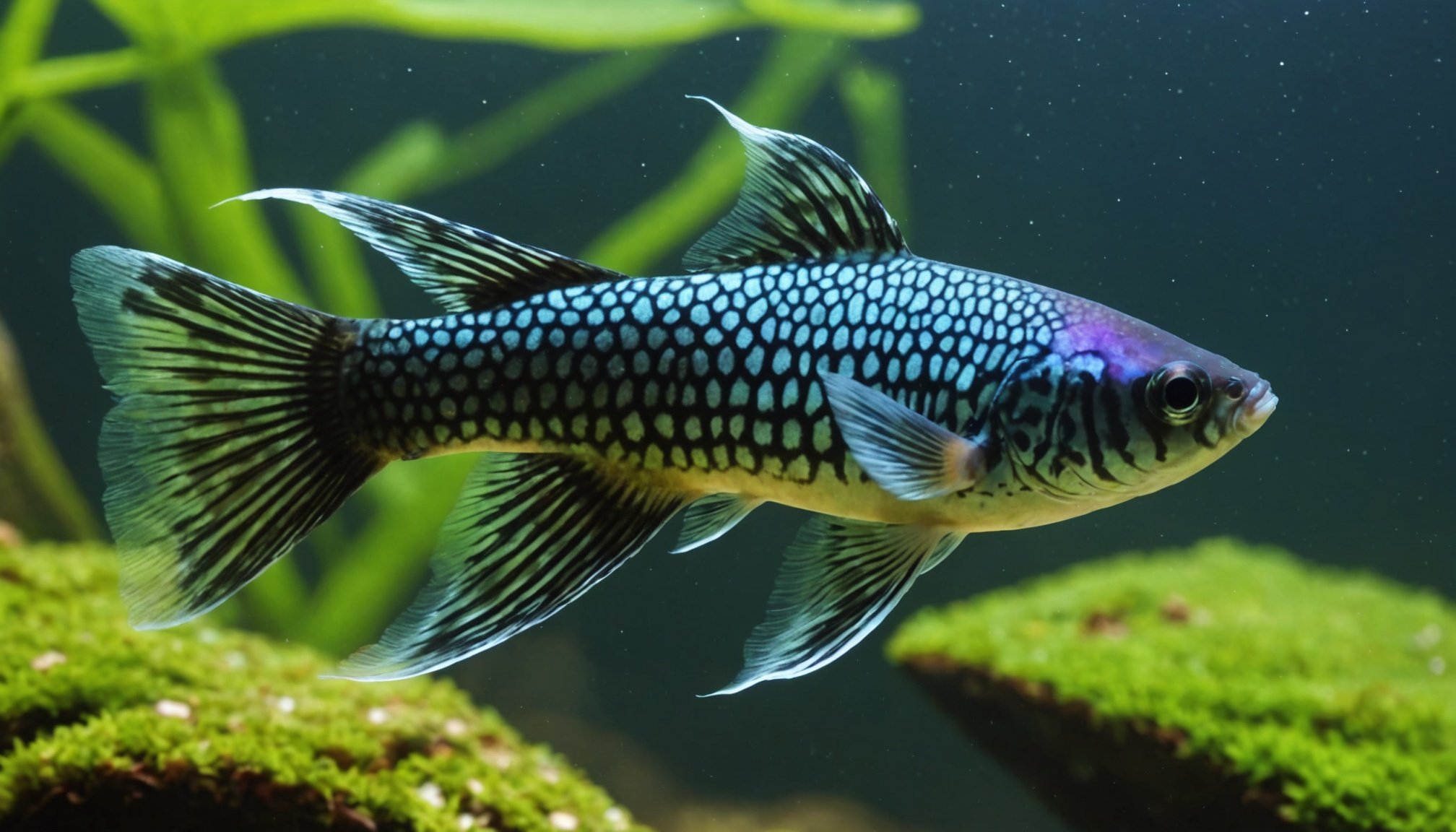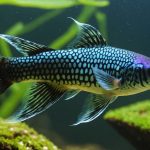Overview of Guppy Fish Breeding
Breeding guppy fish has become a popular hobby due to their vibrant colours and lively nature. An Introductory aspect to guppy fish breeding essentials involves understanding their origins. These small freshwater fish were first discovered in South America but are now bred worldwide, primarily for their decorative appeal and genetic diversity.
The purpose of breeding guppies extends beyond aesthetics; it aids in maintaining a robust gene pool and improving specific traits. Breeding techniques can influence the size, colour patterns, and fin shapes of guppies, providing enthusiasts with the chance to create unique strains. Moreover, breeding guppies can contribute to scientific studies, as they serve as model organisms for research due to their fast reproductive rates and adaptability.
In the same genre : Smoothly navigating your cat”s adjustment to a new baby: expert tips for a harmonious home
Key concepts in guppy breeding revolve around understanding their life cycle and environmental needs. It is crucial to provide adequate space, optimal water conditions, and nutritious food for broodstock. Furthermore, identifying the right pairing and managing the breeding environment are fundamentals of success in this endeavour. Embracing these breeding essentials can enhance the experience, whether one is a novice or seasoned breeder, ensuring a thriving aquarium that mesmerises with its beauty and biodiversity.
Preparing the Breeding Environment
Achieving optimal guppy breeding conditions begins with selecting the right fish tank setup. Aim for a tank size of at least 10 gallons; larger tanks provide a stable environment and reduce stress on the fish due to space constraints. The tank type should be secure with a lid to prevent the agile guppies from jumping out.
This might interest you : Top techniques for reducing shedding in double-coated dog breeds: a comprehensive guide
Setting the appropriate water parameters is crucial. Maintain a temperature between 72-82°F, as guppies thrive in warmer waters. Monitor pH levels, keeping them between 7.0 and 8.0. Implement a reliable filtration system to maintain clean water and reduce ammonia levels.
Selecting suitable companions for guppies is another consideration. Choose compatible tank mates such as mollies or platies to avoid aggression. Ideal tank mates are peaceful and share similar water requirements.
Incorporating live plants like java moss and floating plants benefits the breeding process. Plants offer guppies hiding spots and simulate their natural habitat. These additions support fry survival by providing cover, reducing stress, and improving tank aesthetics.
Creating an optimal breeding environment for guppies involves thoughtful fish tank setup and management of water parameters, enhancing the chances of successful reproduction.
Selecting Breeding Pairs
When choosing guppy breeding pairs, there are vital factors to consider to ensure successful breeding outcomes. One of the key elements is understanding genetics in guppies, as it plays a crucial role in determining the offspring’s traits. Colours and patterns in guppies are inherited characteristics, controlled by genes passed from parents to offspring. By carefully selecting pairs with desirable traits, such as vibrant hues or unique patterns, you can help ensure these features are passed down.
In addition to genetics, it’s important to consider the health and age of the guppies. Ensure the breeding pairs are in optimal health, as this can significantly impact the vitality of their offspring. Signs of good health include active swimming and vibrant colours. Guppies should ideally be mature, but not too old, as younger guppies may not produce viable offspring, while older ones could have diminished reproductive capabilities.
When selecting breeding pairs, balance is key. It involves combining aesthetic desires with genetic knowledge and a focus on health to produce the most robust and appealing guppy fry. Consider these factors to make informed decisions and achieve successful guppy breeding results.
Breeding Techniques and Processes
In the world of guppy breeding, selecting the right approach can significantly impact success. Natural breeding methods involve allowing guppies to mate freely in a community tank, simulating their wild environment. This approach requires minimal intervention, providing a low-stress setting for the fish. However, it may result in less predictable outcomes regarding offspring traits.
In contrast, controlled breeding methods offer more precision. Breeders isolate select pairs to ensure desirable genetic traits are passed on. This setting allows monitoring of the entire process, from courtship behaviors to mating, ensuring a higher chance of achieving targeted breeding results.
The timeline of the breeding process is relatively swift. After a successful mating, guppy gestation typically lasts about four weeks. Signs indicating successful mating include a darker gravid spot near the female’s abdomen and noticeable weight gain as she nears delivery. During gestation, providing ample hiding spaces and a balanced diet supports females while reducing stress.
Observe these breeding cues closely to determine progress and ensure optimal conditions for both mating and gestation. Implementing the right guppy breeding method for your goals while understanding each phase ensures a rewarding experience!
Caring for Fry
Ensuring the proper acclimatization and care for guppy fry is essential for their healthy development. When introducing fry to a new environment, it’s important to carefully manage the transition to avoid stress. Begin by gradually mixing water from their new habitat with their current water to acclimate them gently.
Feeding is a crucial aspect of guppy fry care. To ensure they receive adequate nutrition, provide a balanced diet rich in proteins and nutrients. Small portions of powdered or liquid fry food are ideal, along with finely crushed fish food. Frequent, small feedings are recommended, such as three to five times daily, to support their growth.
Regularly tracking the growth of baby guppies is vital. This includes conducting periodic health checks to monitor for any signs of illness or developmental issues. Weighing and measuring their size will help assess their progress and adjust care methods as necessary. Maintaining clean water conditions is also essential to prevent any health issues, providing a safe and nurturing environment for the fry.
By implementing these best practices, you can create the best possible conditions for nurturing baby guppies, encouraging them to thrive and grow into healthy adult fish.
Common Challenges in Guppy Breeding
Breeding guppies can seem straightforward, but issues in guppy breeding can arise, causing frustration for hobbyists. One frequent problem is poor water quality, which is crucial for guppy health. It’s essential to maintain a stable pH and temperature to prevent stress and potential diseases.
Disease prevention and treatment strategies are central to successful guppy breeding. Common ailments like fin rot and white spot disease can be managed by maintaining clean tank conditions and quarantining affected fish. Treatments might include water conditioners or specific medications.
Behavioral challenges also present hurdles. Guppies can exhibit aggression, especially if the tank is overcrowded. Observing interactions can help identify dominant or stressed individuals, guiding necessary adjustments in tank setup.
Troubleshooting tips can make all the difference. Regular tank check-ups, adapting feeding habits, and providing ample space can alleviate many breeding concerns. Keeping these factors in balance fosters a healthy environment, leading to better breeding results and ensuring your guppies flourish.
Resources for Successful Guppy Breeding
Successfully breeding guppies requires ample knowledge and the right guppy breeding resources. Many helpful books delve into the specifics of guppy care, breeding techniques, and maintaining an ideal habitat. These written resources provide invaluable insights, especially for beginners and experienced breeders alike.
In addition to books, online community forums offer a unique avenue for learning. These platforms allow enthusiasts to share experiences, providing both solutions and inspiration. Engaging with fellow breeders online ensures you remain abreast of new techniques and trends in guppy breeding.
Expert networks are another excellent resource. By connecting with specialists and breeders with years of experience, you can obtain advice and insights that might not be available through conventional resources. Whether through webinars or interactive sessions, these networks offer detailed guidance tailored to specific breeding scenarios.
Visual aids such as videos and illustrative guides are indispensable for understanding the practical aspects of guppy breeding. Observing detailed step-by-step procedures can make complex topics more approachable. Reference materials, such as charts and infographics, are also beneficial, allowing breeders to visually track developmental stages or identify conditions that may affect breeding success.
FAQs about Guppy Fish Breeding
Understanding the intricacies of guppy breeding can raise several common inquiries among enthusiasts, especially those new to the practice. Addressing these guppy breeding questions effectively requires precision and clarity.
How often do guppies breed? In suitable conditions, guppies typically breed every 30 days. Their rapid reproductive cycle can lead to a large population quickly, making it essential for breeders to manage tank conditions meticulously.
What are some tips from experienced breeders? Seasoned breeders emphasize the importance of maintaining clean water conditions and a balanced diet to ensure healthy offspring. Adequate tank space is also critical to prevent overcrowding and stress among the fish.
Are there any myths and misconceptions about breeding guppies? A common misconception is that guppies require complex breeding setups. In reality, while providing ideal conditions enhances breeding success, guppies are relatively hardy and can breed in basic tank environments. Another myth is that all guppy fry need to be separated immediately after birth; however, this largely depends on the presence of adult guppies and other fish that might prey on the fry.
By addressing these inquiries with precise answers and practical tips, both novice and experienced breeders can enhance their understanding and success in guppy breeding.











